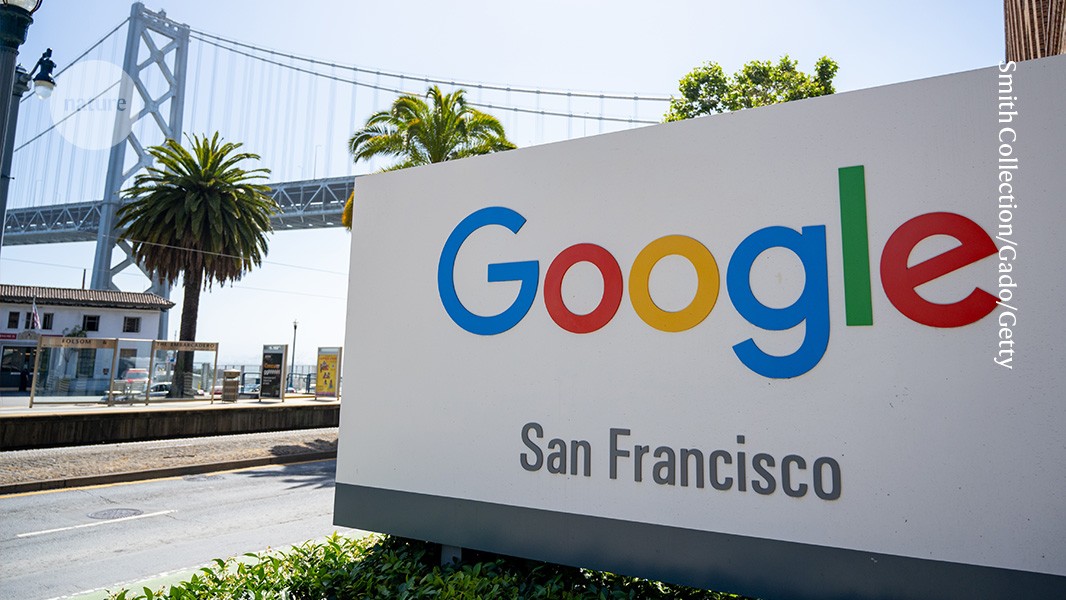These AI firms publish the world’s most highly cited work

US and Chinese firms dominate the list of companies that are producing the most research and patents in artificial intelligence

Google’s parent company Alphabet has published the world’s most highly cited papers in AI.Credit: Smith Collection/Gado/Getty
US tech giants Alphabet and Microsoft produce more highly cited research papers on artificial intelligence (AI) than any other company — but Chinese firms Baidu and Tencent are ahead on patents.
That’s according to PARAT, the Private-sector AI-Related Activity Tracker, a tool run by the Emerging Technology Observatory (ETO). The tool gathers data on AI trends and has received a major update.
PARAT’s update includes data on the number of AI jobs at companies, as well as publication and patent outputs. AI research and its products — in particular generative models that create text and images — have become big business. Governments are working out how to regulate the technology as it disrupts industries and raises safety questions.
In a field where cutting-edge research happens as much in industry as it does in universities, monitoring commercial activity is important, says Ngor Luong, who tracks AI investment and corporate activities at the Center for Security and Emerging Technology, a think tank focusing on AI at Georgetown University in Washington DC, which hosts the ETO. Companies are at the forefront of innovation in AI, she says.
International expertise
The data show that large Chinese firms are very competitive in AI, including when adjusting for the quality of the work produced, says Zachary Arnold, lead analyst at the observatory. Three Chinese tech giants — Tencent, Alibaba and Huawei — feature in the top ten when companies are sorted by the number of highly cited AI papers and preprints (see ‘AI giants’). “There’s still a bias here in DC, and probably elsewhere, that China is big and can produce a lot, but it’s not really in the top tier,” says Arnold. However, the ETO calculates multiple quality-adjusted metrics and Chinese companies are “putting up impressive numbers” for these, he says.

Source: PARAT/ETO
The most cited paper in all AI research, according to PARAT data, is a 2017 paper1 entitled ‘Attention is all you need’. The paper from US-based researchers at Alphabet subsidiary Google and is famous for describing the ‘transformer’ architecture that now underlies many generative AI models. One highly-cited example including authors from China is a paper2 called ‘ICNet for Real-Time Semantic Segmentation on High-Resolution Images’, co-authored by researchers at Tencent, which describes an improved method to identify objects in images.
US firms account for just three of the ten companies that have filed the most AI patents over the past decade — the rest are in China, Germany and South Korea. The Chinese government has long incentivized patenting, but in the past few years there has been a drive against doing so gratuitously, adds Luong.
Top employers
The data also highlight the diversity of the sector, says Arnold. There is a long tail of firms well beyond the ‘big five’ companies — Alphabet, Amazon, Apple, Meta, Microsoft. And when ranked by highly cited AI research, famous names such as OpenAI and Apple appear alongside companies less known for their AI innovation, such as Japanese conglomerate Mitsubishi and US entertainment firm Disney. Luong points out that PARAT’s paper and patent data go up to only the start of 2023, so they miss recent developments.
Other metrics reveal sometimes overlooked AI activity, says Arnold. PARAT now includes figures on the number of AI jobs at a company, a metric based on data from the social-media platform LinkedIn, which are most accurate for US firms. It reveals companies with “a critical mass of talent in AI”, he says. Amazon tops the table by this measure with 14,000 jobs, but is closely followed by multinational consulting firm Accenture. Large consulting companies now act as ‘guns for hire’ for AI projects at other firms and in government, says Arnold.
It is important to be able to examine companies’ activities through a variety of lenses, he adds. “We saw a lot of discussion around ‘who’s ahead in AI?’ We’re data nerds and we know there’s many different types of data you can use to answer that question, and it doesn’t always point in exactly the same direction.”
doi: https://doi.org/10.1038/d41586-024-02515-1
This story originally appeared on: Nature - Author:Elizabeth Gibney


















